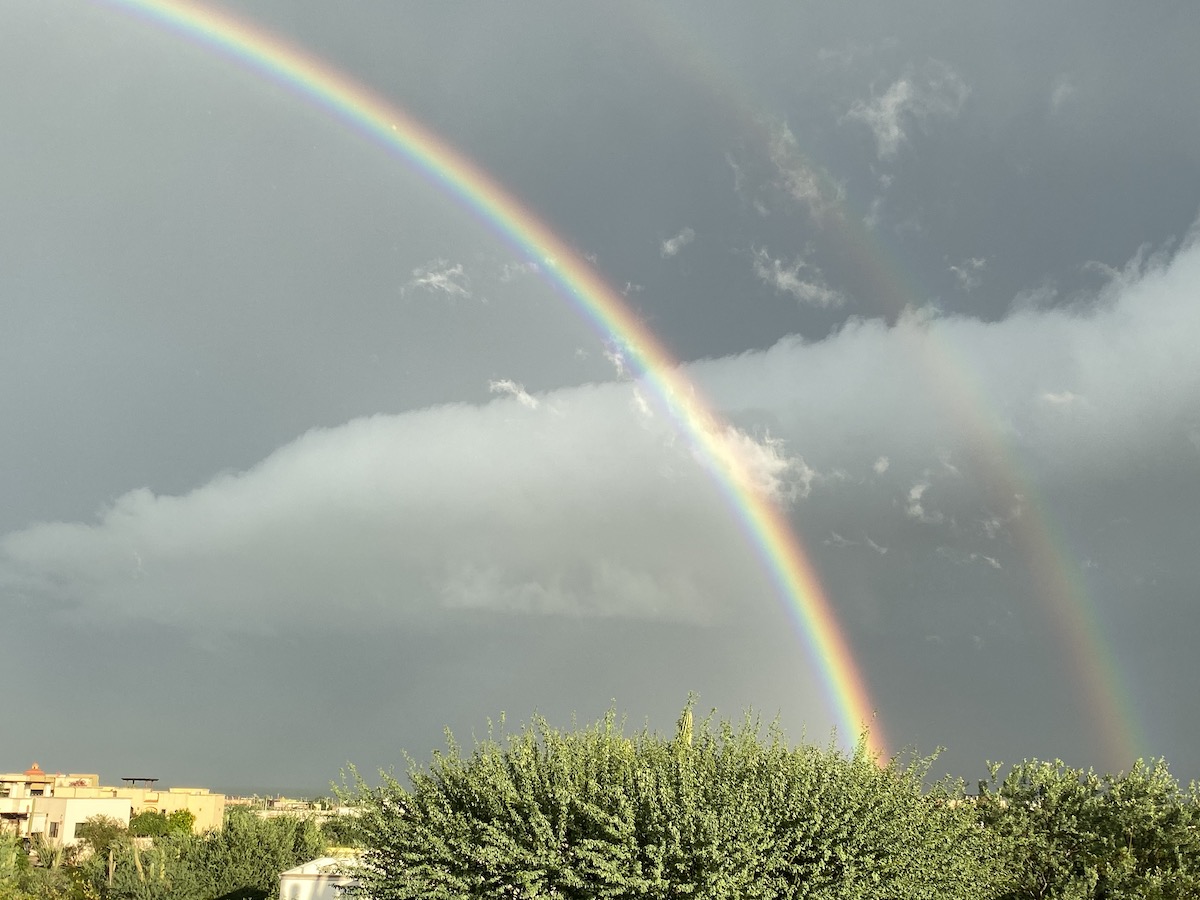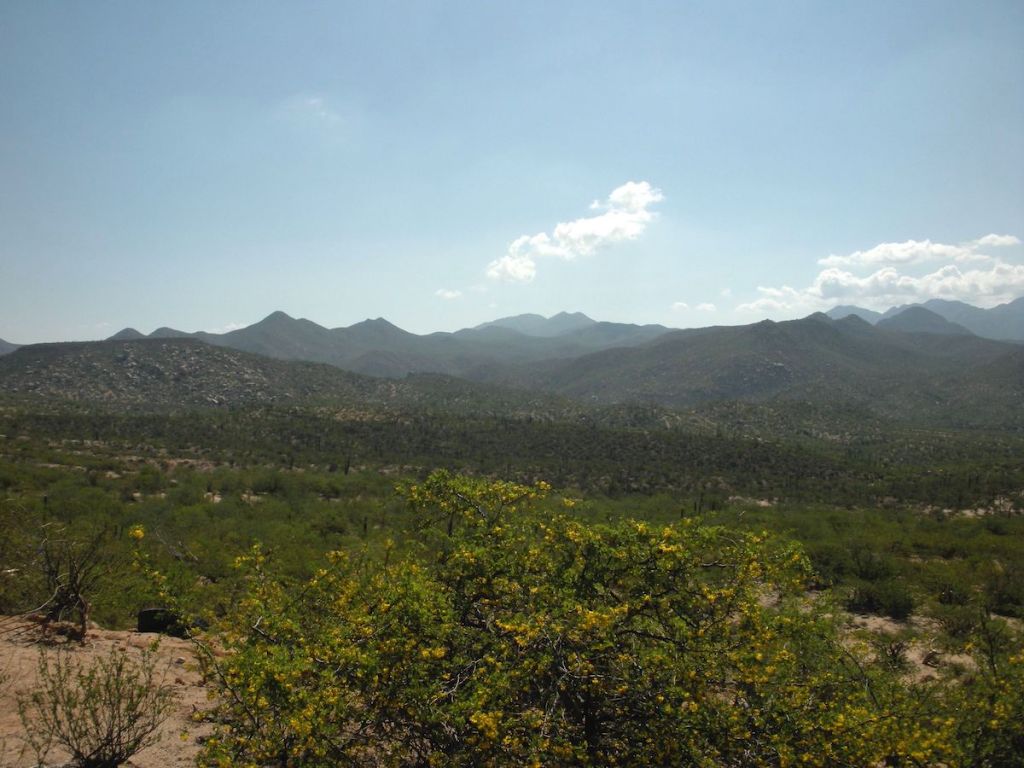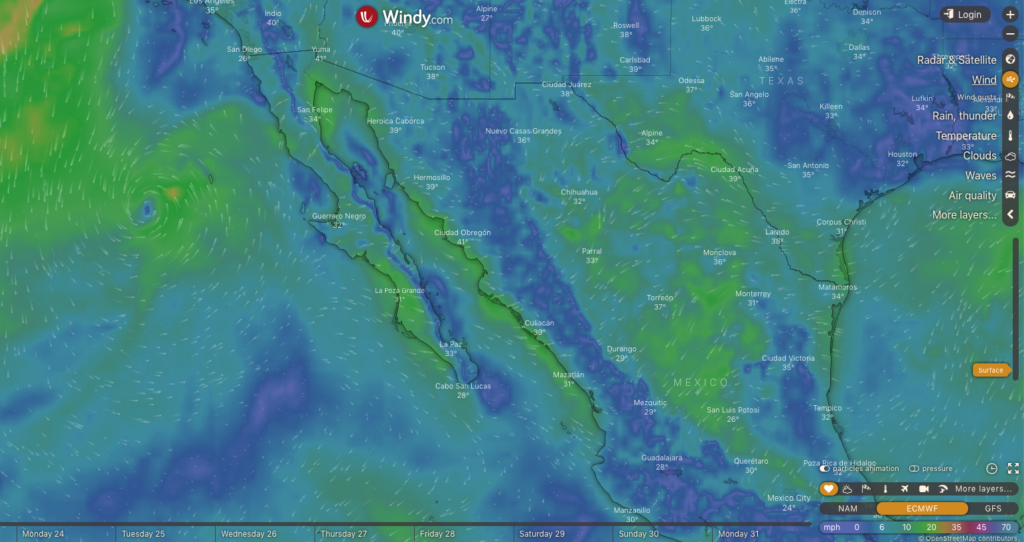Whether you’re buying or selling a home in La Paz, here’s how to make sure you’re prepared for rainy season.
By BCS Home & Pool
It’s that time of year: storm season in La Paz. While technically the “hurricane season” in the Pacific can start as early as May and last through November, the typical rainy months in La Paz are August and September. These are also the hottest months here, so to avoid the heat and humidity, many seasonal visitors leave town during these months to visit family or go on vacation where it’s cooler.
Whether you are buying a home in La Paz or are listing your home for sale, following are some tips to help make sure your home weathers the storm season safely.
Rain is Essential
With only a few months of rainy season, local La Paz and El Centenario residents welcome the rain. Not only does it help cool us off after a long, hot July, it replenishes the local aquifers and assures that our communities have a supply of water in the dry months to come. The desert blooms after a good rain, and it can be pretty incredible to see so many of the local plants spring to life, with green replacing the brown desert everywhere you look, and colorful flowers making an appearance.
Big Hurricanes are Rare
“Storm season” may sound ominous, but the truth is that really big storms are fairly rare here in La Paz. The last (and only recent) big hurricane to hit La Paz was Odile, a Category 4 storm that made landfall in Baja in 2014. Odile caused a fair amount of damage in La Paz, knocking out power for more than a week. However, the typical storm season here is more likely to bring occasional drenching rains, some wind, and an occasional tropical storm. Some homes may experience a bit of wind damage and you may have to do some water cleanup inside the house after a storm.
Due to our geographic position on the Sea of Cortez, most storms (like the recent Hurricane Genevieve) come up the west coast of mainland Mexico and may hit the tip of the Baja peninsula (Los Cabos) and then veer off west out into the Pacific. If they come up or over the Baja peninsula, they go over the mountains, and much of the force dissipates before reaching La Paz. This is not always the case, of course. Last year, tropical storm Lorena came up the Sea of Cortez and briefly gained hurricane status, but just as quickly dissipated. You can track the progress of Pacific storms on web sites such as Windy.com (also an app you can download to your phone); http://eebmike.com/; and https://www.nhc.noaa.gov/?epac.
Storm Considerations If You’re Buying or Recently Bought a Home
When you are buying a home in La Paz, looking ahead to storm season and making sure the home is well-built to withstand the weather is a good idea. Here are a few things to keep in mind:
Concrete Construction: Most homes here in La Paz and El Centenario are built of concrete block reinforced with metal rebar, and covered in stucco, so they are well-suited for weathering storms. There are no shingles or siding to be torn off by high winds.
Floor Materials: Tile floors are also the norm here, as they do a better job of withstanding heat and humidity. That means water damage to floors is usually minimal as long as it’s cleaned up promptly after the storm.
Roof Construction: Most homes in La Paz have flat roofs, which are perfect for use as extra outdoor living space and for catching those beautiful sunrises and sunsets. The roofs should have proper drainage to allow the water to run off, and be sealed with a membrane and elastomer paint. As long as the home is well-maintained and the roof resealed every 2-3 years (typically costs a few hundred dollars US), they hold up well. The good/bad news: You’ll find out where any leaks are after the first heavy rain, and it’s a good idea to get those fixed as soon as possible.
Doors and Windows: Glass doors and windows are the most vulnerable part of a home during a storm. Standard glass is 5-6 mm thick, but some homes have thicker glass on the larger sliding doors and windows. Glass is easy and inexpensive to replace, so even if you lose some glass, your costs should be limited. Pro tip: it’s a good idea to keep your blinds down during a storm to prevent glass from blowing into the house if a window does shatter.
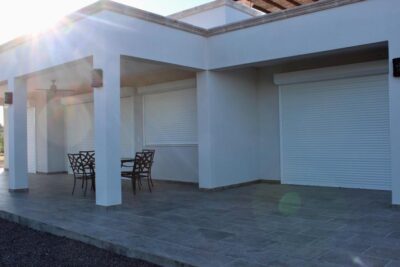 Storm Shutters: One way to protect those glass doors and windows is to install storm shutters on your home. If you are buying or selling a home here, keep in mind these shutters can be a valuable feature. There are several different styles, from coverings you put up manually to automated, remote controlled shutters that can be rolled up or down with the touch of a button. Storm shutters can also serve as an extra layer of security for seasonal residents, or when you leave on vacation.
Storm Shutters: One way to protect those glass doors and windows is to install storm shutters on your home. If you are buying or selling a home here, keep in mind these shutters can be a valuable feature. There are several different styles, from coverings you put up manually to automated, remote controlled shutters that can be rolled up or down with the touch of a button. Storm shutters can also serve as an extra layer of security for seasonal residents, or when you leave on vacation.
Water Storage: Most homes in El Centenario are served by SAPA, the municipal water company. In addition, most will also have a 5,000 or 10,000 liter cistern buried on the property for local water storage. In drier years, the local wells can start to run low by late summer, so it’s a good idea to keep an eye on the water level in your cistern. Locals know to conserve on water consumption during the summer months (a good idea year round when you live in the desert). If you do run out of water, you can order water delivered by truck for less than 1,000 pesos. The minimum delivery is 10,000 liters, so if you only have a 5,000 liter cistern you can share the cost with a neighbor. It’s also a good idea to buy a few garafones (20 liter bottles of water) for drinking water. You can buy them at any OXXO (the local convenience stores) or have them delivered to your door.
Backup Generator: Does the home have a backup generator? If the answer is yes, make sure the generator is in good working order, and that you have a supply of either propane or gasoline for it, depending on the type of generator. How powerful is it? Will it run multiple appliances? You want to make sure you can run lights, your refrigerator, and at least one A/C unit (for whichever room you are using at the time). If the home has a transfer switch installed, that means you can quickly switch the entire home to the generator and use any electrical devices, as long as you don’t draw more power than the generator can deliver. Dual fuel (gas + propane) generators are ideal and are available here in La Paz.
What to Do If You’re Selling Your Home or Leaving for the Season
If you are a seasonal resident or going on vacation during storm season, it’s wise to take a few precautions before you leave to make sure your home is ready in case of a storm. Following are a few things you can do to make sure your home is well-prepared:
Seal Your Roof: If you haven’t re-sealed your roof in the past 2 years, you should have it done before the first rains to avoid any surprises. This helps you avoid any signs of water damage or worse, standing water, when buyers tour your home.
Cover Windows and Doors: The most likely entry point for wind and rain is through larger windows and sliding glass doors. You can invest in storm shutters or use another lower cost method (such as plywood or canvas covers) to reinforce windows and doors against high winds. If you have no window/door coverings, bring your screens inside, as they can sometimes blow off in heavy winds.
Clear Your Patio and Yard: Tropical storms can cause wind gusts of 50mph or more, so it’s a good idea to bring your patio furniture inside when a storm is imminent, or if you are leaving for the season or on vacation. Also, make sure you bring in potted plants, clean up debris and secure anything else that might become airborne in a high wind.
Avoid Water Damage: Move anything off the floor that you don’t want to get wet. Placing small blocks under the corners of valuable furniture in your home, or under boxes sitting on the floor in the garage, can help protect these things from water damage. Unplug any electrical cords that run along the floor and stow them where they will stay dry.
Ask for Help: If you will be gone during rainy season, ask a neighbor or hire a local property manager to check on your property They can also help you prepare for an incoming storm and check on your home after a storm to make sure nothing was damaged and there is no water inside the house. Make sure they have some cash in case any damage occurs and they need to hire a contractor to make repairs or purchase replacement parts.
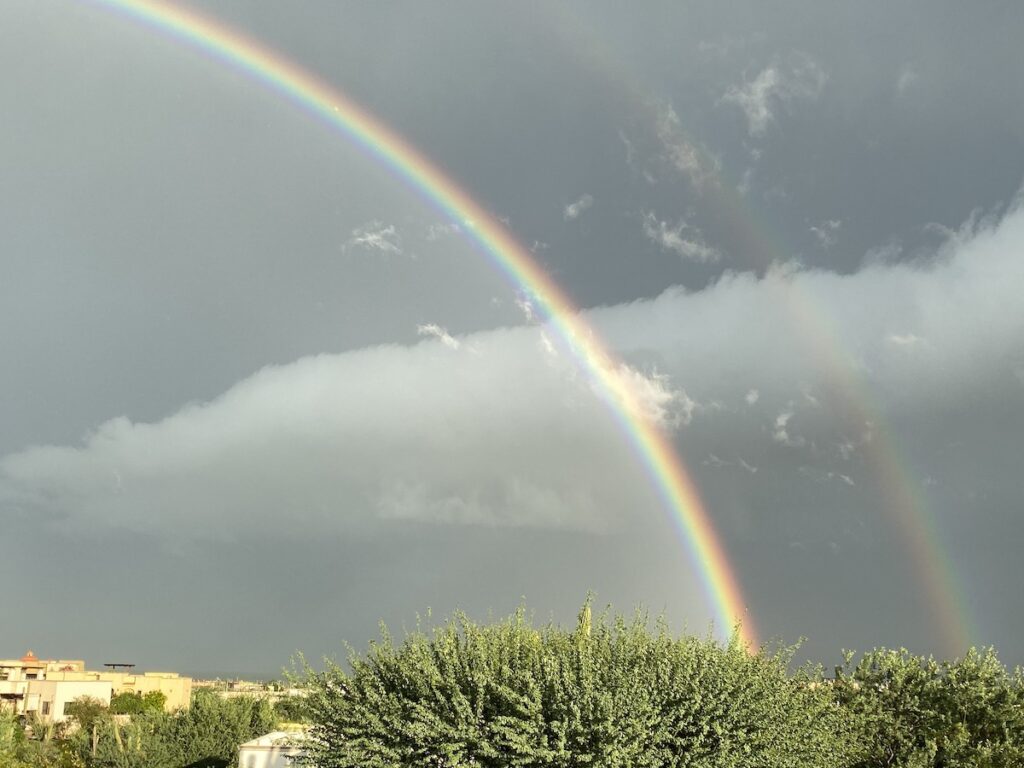
Storm Preparation Checklist
Whether you’re leaving for the summer months or will be here during storm season, here’s a handy checklist, courtesy of property management company BCS Home & Pool, to make sure your home is prepared:
If you are leaving La Paz before storm season:
- Install hurricane screens (if you have them) on doors & windows
- Remove screen doors and store inside
- Clear your roof drains of debris
- Make sure solar panels are securely fastened to roof
- Clear the patio area and yard of anything that could have the potential to fly away in the wind (furniture, art, smaller plants, garbage cans, etc.)
- Place rolled-up towels along the base of all doors (except primary entry door)
- Leave nothing on the floor that you don’t want to get wet. Raise furniture on blocks if you can.
- Close or cover all bath/shower/sink drains
- Have a neighbor keep an eye on the house, or hire a property manager to check on your home.
If you are here during a storm:
- Fill your home’s propane tank
- Fill car/truck with gas, and fill extra tank(s) of gas if you have them
- Buy good flashlight(s), extra batteries, candles, and matches or a lighter
- Buy extra food (non-perishable) and extra bottles of water
- Make sure you have plenty of cash on hand
- Fully charge cell phones, tablets & computers
- Watch for updates on storms at http://eebmike.com/ & https://www.nhc.noaa.gov/?epac
Don’t Worry
Whether you plan to live in La Paz year-round or leave during the hot summer and rainy months, making sure your home is well-prepped for bad weather is always a good idea. Similar to prepping for the winter season up north, getting ready for storm season is a matter of using common sense and taking a few precautions to make sure your home is well-prepared. If you’re buying a home in La Paz, taking these considerations into mind will help give you peace of mind. If you’re selling your home, you can rest easy knowing your home is ready for the season.
Need a Property Manager?
Property Management – Pool Care – Vacation Rentals

